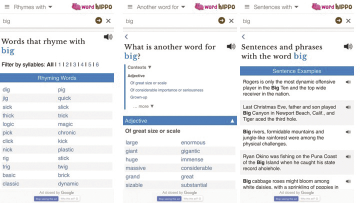Support for writing: apps and e-tools for young learners
Teaching writing to young English language learners can be challenging, and they often find writing the most difficult of the four skills to master. This is understandable, as creating a piece of writing requires the convergence of various types of knowledge, skills and attitudes. If the learners don’t have a reason to write, don’t know the conventions of the genre of the text they are writing, don’t have positive beliefs about their abilities and don’t receive adequate support as they construct and re-construct their text, it is likely that they won’t want to write or develop their writing skills.
At the same time, teachers often struggle to cater for diversity in abilities and to make time and space for writing. However, there are a number of e-tools and apps that they can use to support the teaching and learning of writing.
Seesaw
Seesaw is a digital learning platform specifically designed for young learners. It has a user-friendly interface that mimics popular social media platforms such as Facebook. Teachers can create activities for their learners to complete, or the learners can upload their work in a variety of different formats, including pictures, Google Doc files, photos, videos and notes. Seesaw can be a great platform for the learners to share their finished and ongoing work with their peers, teachers and parents. This allows them to share their work with authentic audiences, write for a social purpose and create a record of their writing development. Andrew Beaumont and I have found Seesaw to be a good space for parents to engage with their children’s school-based English language writing, creating a bridge between home and school. Seesaw is available online and on various mobile devices.
For more information, visit https://web.seesaw.me.
Padlet
Padlet is a digital interactive discussion board. The teacher can create a board and invite the learners to post comments, ideas, responses, images and links to it. Young learners can often struggle to come up with ideas before and during the writing process. Using Padlet can allow them to post their ideas and see their classmates’ ideas. It is, therefore, a useful way to get the learners to engage in talk around their own evolving ideas and those of their peers. The learners can return to the Padlet board at any time throughout the writing process. Figure 1 shows how Padlet was used to brainstorm different ways to modify the story ‘The Three Wishes’.
To find out more about Padlet, go to https://padlet.com/dashboard.

Figure 1
Shadow Puppet Edu
It is important for young learners to be able to take pride in their written work. One way to help cultivate a positive attitude towards writing is by providing writing templates that look like real-world texts. Shadow Puppet Edu is a young-learner-friendly app that allows the learners to create videos, using images and texts. The product looks professional and ‘real’. After the learners create a slide show using photos or images from ‘creative commons’ sources, they can record their texts aloud. This also gives them important opportunities to practise speaking, and leads to a multi-modal text. Their videos can then be uploaded and shared on Seesaw (see above). At present, Shadow Puppet Edu is only available on Apple devices.
For more information, go to http://get-puppet.co.
Wordhippo
Wordhippo is both an app and a website. It is an online thesaurus and creative word tool that can help young writers enrich their writing. Often young learners will play safe and use only words they know. Wordhippo will provide them with similar words, opposite words, definitions, translations, sample sentences, rhymes and word forms. Teachers can, therefore, encourage their learners to use it, to expand their vocabulary use. See Figure 2 for various responses generated by this tool to the word big. Wordhippo is available online and on various mobile devices.
For more information about it, go to www.wordhippo.com.

Figure 2
While writing is challenging for teachers and learners alike, the use of apps and e-tools can provide much-needed support. Most of these tools do not require the learners to have individual devices or logins, so a small suite of tablets can be used in groups or accessed as needed. n
Moorhouse, B and Beaumont, A ‘Involving parents in their children’s school-based English language writing using digital learning’ RELC Journal https://doi.org/10.1177/0033688219859937 2019
Benjamin Luke Moorhouse is a lecturer in English language education at the University of Hong Kong, where he teaches on initial teacher education programmes. His research interests include initial English language teacher education and teaching English to young learners.

Comments
Write a Comment
Comment Submitted